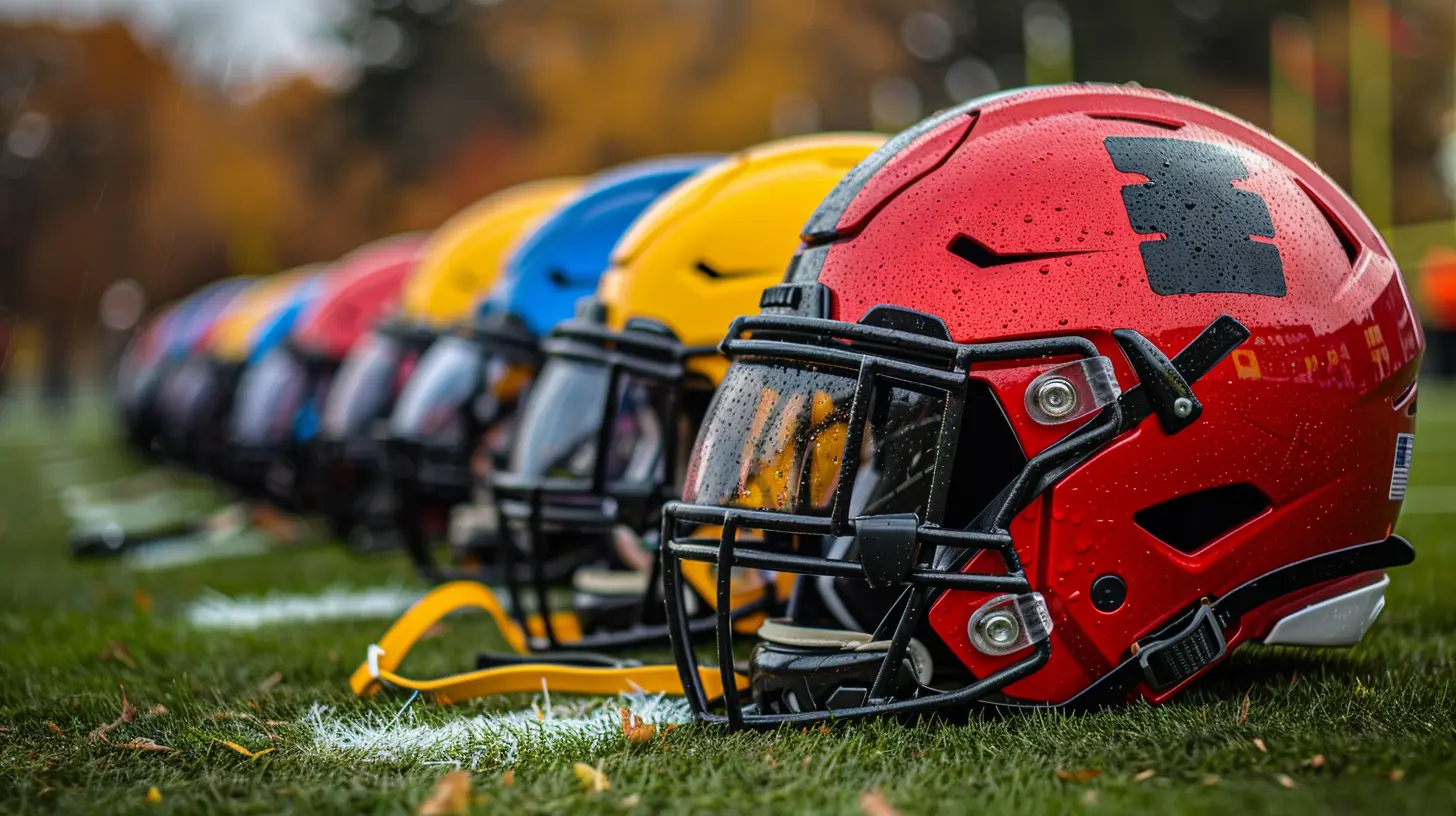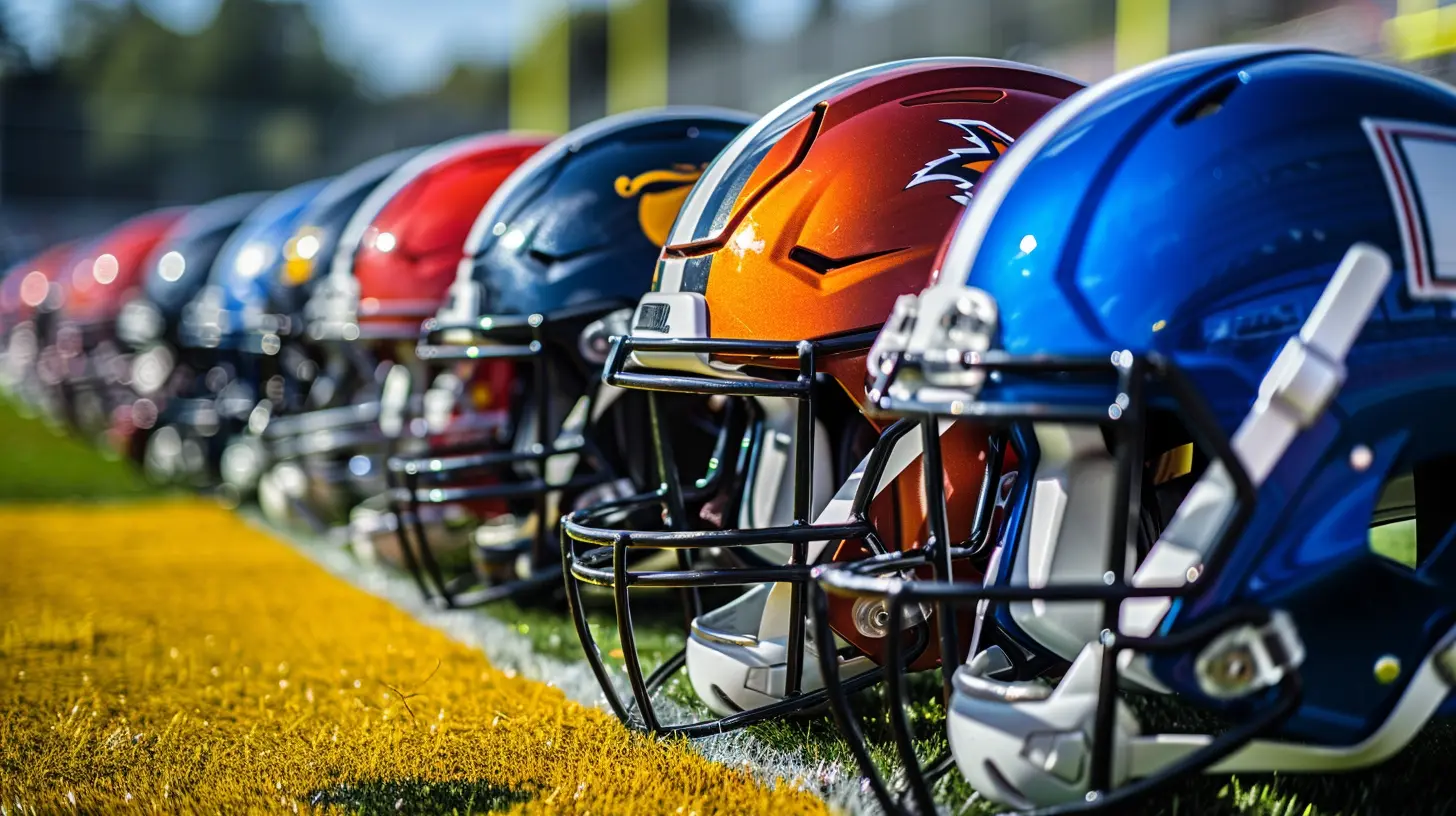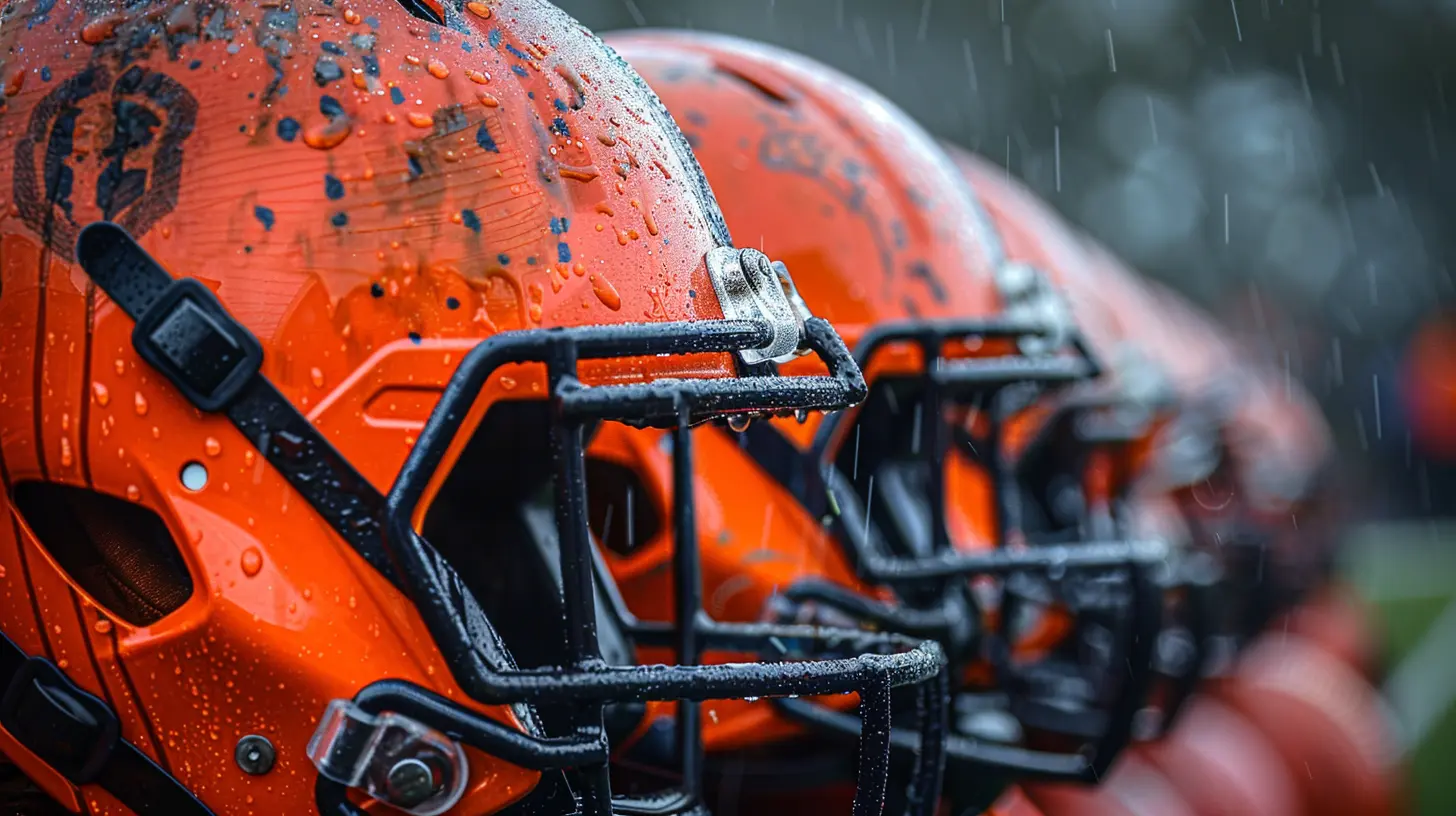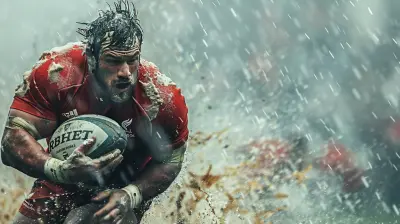Football Helmets: What You Need to Know About Safety
30 June 2025
Hey there, football fans! Whether you're a player, a parent, or just a superfan who loves watching the game every Sunday, chances are you've noticed just how high-impact football can be. It's fast. It's intense. And yeah — it can be downright dangerous. That’s where football helmets come into play (literally and figuratively).
But how much do we really know about football helmet safety? What makes one helmet safer than another? And with all the new technology out there, how do we know if that pricey new lid is actually worth the investment?
Well, grab your chinstraps, because we're diving headfirst into the gritty (and sometimes confusing) world of football helmet safety. Trust me, by the end, you'll look at helmets in a whole new way.
Why Football Helmets Are More Than Just Protective Gear
Let’s start with the basics. Think of a football helmet like the seatbelt of the gridiron — it doesn’t stop the crash, but it can sure reduce the damage. Football helmets were designed to protect against skull fractures, bruises, and facial injuries. Over time, they've become even more advanced, now aiming to reduce the risk of concussions and brain injuries.But here’s the sad truth — no helmet can make football 100% safe. Surprised? Yeah, that’s a hard pill to swallow. Helmets are evolving, but so are the hits.
This leads us to the real question: What exactly makes a helmet safer?
The Anatomy of a Football Helmet: What’s Inside Counts
If you’ve never taken one apart (don’t worry, most people haven’t), you might be shocked by how much tech is crammed into these things.1. Outer Shell
Made of polycarbonate plastic — basically the same stuff used in bulletproof glass. The idea here is to spread the impact force over a wider area so it doesn’t all hit one spot.2. Inner Padding
This is where the real magic happens. Foam padding in different shapes and densities helps absorb shock, reduce wobble, and provide comfort. Some helmets even use air bladders or liquid padding for custom fit and better impact response.3. Face Mask
Not just for looks. It's a steel or titanium cage that prevents facial injuries and adds structural integrity to the front of the helmet.4. Chin Strap
Keeps the helmet snug and in place. Sounds simple, but a loose helmet can turn a standard hit into a dangerous one real quick.5. Visor (Optional)
Helps reduce glare and can protect the eyes from debris or accidental pokes. Some players use tinted visors for style, but let’s be honest — if it helps you see better, that’s a win.
Safety Ratings and Standards: What to Look For
Not all helmets are built alike, and thankfully, we have safety standards to help separate the good from the gimmicky.NOCSAE Certification
The National Operating Committee on Standards for Athletic Equipment (yeah, it’s a mouthful) is the go-to authority on helmet safety. If a helmet doesn’t have their seal, it’s not league-legal — and probably not safe.NFL Helmet Rankings
Each year, the NFL and NFLPA review and rank helmets based on extensive lab testing. They test for impact in multiple directions and at different speeds. Players are encouraged (though not forced) to wear top-tier helmets.Youth vs. Adult Ratings
Helmets designed for kids have different criteria. That’s because kids aren’t just mini-adults — their brains and skulls are still developing. So if you're shopping for a young athlete, always go with a youth-specific model.
Concussions: The Elephant on the Field
You can’t talk about helmet safety without bringing up concussions. They’re the most talked-about — and most misunderstood — injury in football.What Is a Concussion Anyway?
In simple terms, it’s a brain injury caused by the brain bouncing around inside the skull. The scary part? It can happen without any direct contact to the head. A hard body hit can whip the head enough to cause a concussion.Can Helmets Prevent Concussions?
Here’s where things get tricky. Helmets can reduce the risk, especially with improved padding and design. But they can’t eliminate concussions completely. Think of it like wearing running shoes — sure, they help prevent foot injuries, but they won’t keep you from tripping on a rock.Modern Innovations to Reduce Concussions
Some companies are going high-tech. We're talking motion sensors, smart helmets that light up after a hard hit, and designs that disperse rotational force — one of the main causes of concussions. It’s like upgrading from VHS to streaming — the tech is finally catching up with the problem.The Evolution of Football Helmets: From Leather to Lab-Tested
It’s wild to think, but football started out with leather caps. That’s it. No plastic. No padding. Just a glorified hat.Fast forward a few decades, and helmets started evolving with layers of foam and hard shells. By the 2000s, we saw a big shift toward concussion-reduction efforts. Now in the 2020s, helmet design is almost a science experiment — precision molds, pressure customization, and even AI-influenced design coming into play.
We’ve come a long way, but the evolution isn’t over.
Choosing the Right Helmet: It’s Not One-Size-Fits-All
Let’s face it: Your head is YOUR head. What fits your buddy might not even come close to working for you.Here’s what to look for when picking a helmet:
Fit is Everything
Too loose? You risk sliding around on impact. Too tight? You’ll have headaches before you even get hit. A proper fit should feel snug without pressure points.Position-Specific Design
Some helmets are designed with different player positions in mind. Linemen, for instance, might want extra protection up front, while receivers might prioritize visibility and weight.Brand Matters (Sometimes)
Top brands like Riddell, Schutt, and VICIS keep topping safety rankings for a reason. But don’t just chase the label — focus on fit and certification first.Budget vs. Safety
We get it — high-end helmets can cost a few hundred bucks. But when you’re talking about brain safety, the investment often pays for itself. If you’re strapped for cash, go for the top-rated helmet within your budget and make sure it’s certified.Maintenance and Reconditioning: Safety Doesn't End After the Purchase
Like a car, a helmet needs regular tune-ups. And no, just wiping it down with a towel doesn’t cut it.Reconditioning
Most schools and teams send helmets in for reconditioning every year. This includes deep-cleaning, replacing worn parts, and re-certifying safety. If you’re using a helmet for more than one season, this is non-negotiable.When to Replace
If your helmet has taken a serious hit, shows visible cracks, or is more than 10 years old — it's time to upgrade. Manufacturers usually have a recommended lifespan, so don’t ignore it.Top-Rated Helmets for Safety (As of Now)
Curious about what’s leading the pack right now? Here are a few helmets that consistently score high in safety tests:- Riddell SpeedFlex – Top pick in both pro and college levels. Great all-around protection.
- VICIS ZERO2 – Known for its revolutionary outer shell that absorbs impact like a cushion.
- Schutt F7 UR1 – Customizable and lightweight, perfect for skill positions.
You’ll find different models depending on whether it's for youth or adult players, so always double-check before buying.
The Bottom Line: Safety Starts with the Helmet, But Doesn’t Stop There
Here’s the truth: No helmet can protect you if it’s not worn properly, maintained regularly, or used with proper tackling technique. Safety in football is more than just gear — it's education, awareness, and a commitment to doing things the right way.So whether you’re buying your first helmet, upgrading for a new season, or trying to keep your kids safe on the field, the smartest play you can make is staying informed.
And hey — helmets have come a long way since the leather cap days. Let’s keep pushing for innovation, smarter choices, and safer playing fields.
Remember, your brain's not replaceable. Your helmet is.
all images in this post were generated using AI tools
Category:
Sports EquipmentAuthor:

Uziel Franco
Discussion
rate this article
1 comments
Isadora Estes
Great insights on helmet safety! Prioritizing player protection is crucial for the future of football.
July 15, 2025 at 2:39 AM

Uziel Franco
Thank you! Player safety is indeed our top priority in football!


